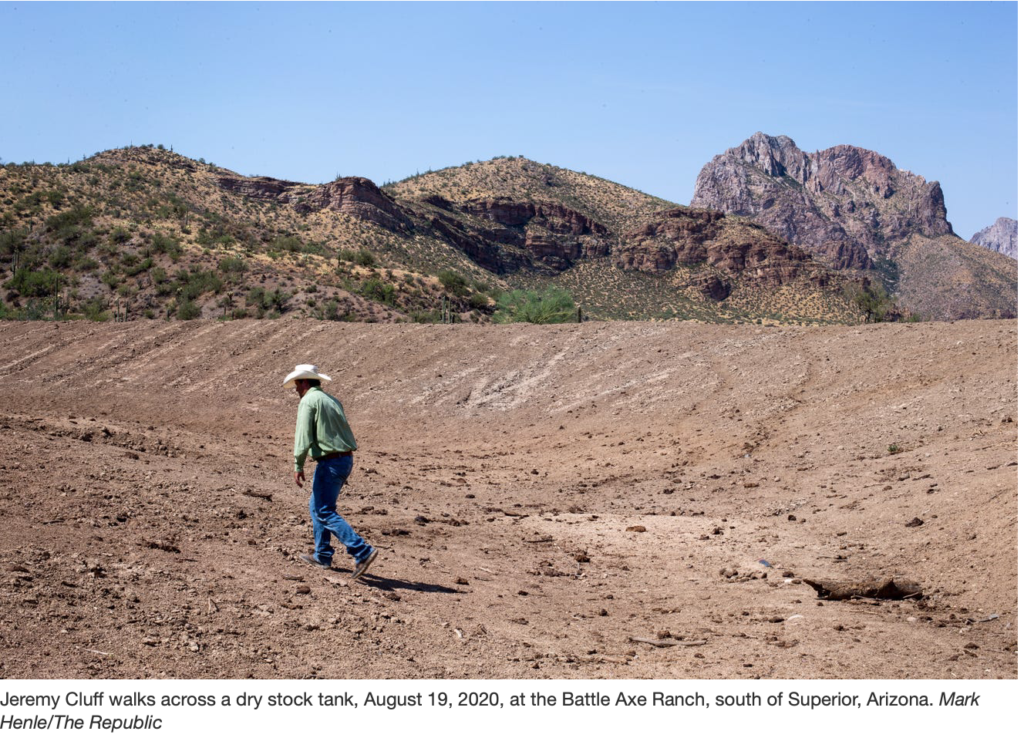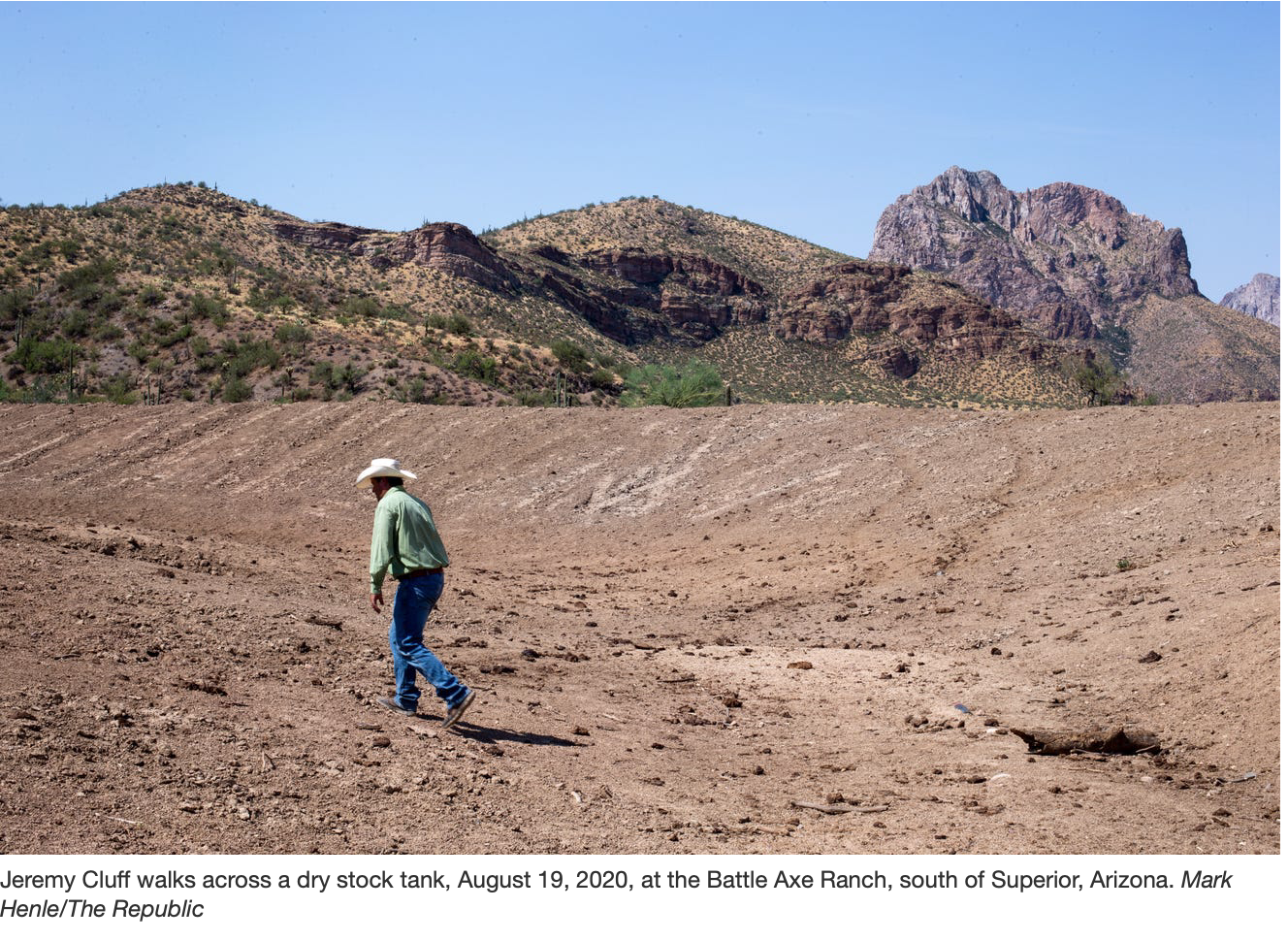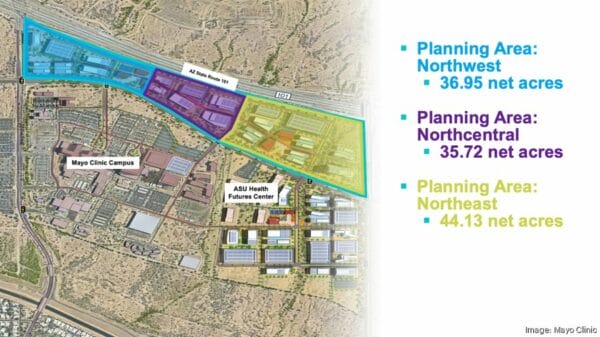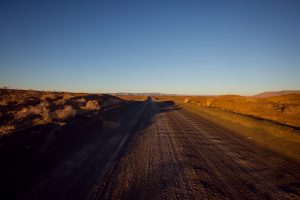
By Ian James | Arizona Republic
ST. JOHNS, Arizona — Kevin McFee looked out across the grasslands on his ranch, where a pair of cows grazed in the distance among the sagebrush and juniper trees.
Usually this time of year, he’ll see tall dark clouds rolling in over the pasture. Arriving with thunder and lightning, the storms douse the land and nourish the grasses. When the monsoon rains come, the grasses will turn so green, McFee said that “it almost hurts your eyes.”
But this year, the monsoon hasn’t come. The summer has brought just a few sprinkles and unrelenting blue skies. The rangelands across eastern Arizona have been left parched.
McFee looked down at the dusty ground and touched the toe of his boot to a tuft of golden-brown grass, which was shriveled to a crisp.
“It’s pretty burned and dry,” McFee said. “This is the stuff that needs to grow in the warm season.”
He and other ranchers count on grasses like sacaton and black grama to fatten up their cows during the summer. And for these grasses to grow, they need summer rains.
As the monsoon storms have failed to materialize, much of Arizona has baked in one of the driest summers on record.












